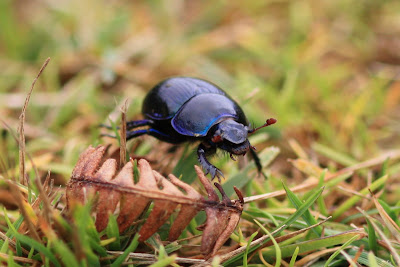Four intrepid souls, armed with a variety of cutting tools, began work on a length of embankment that was overgrown with Willow, Hawthorn, Dog Rose and Brambles. This area is designated as a 'butterfly bank' and it should be a grassy place in full sun and with a plentiful spread of native wild flowers.
However, the encroachment of the above-mentioned bushes and trees have compromised this habitat and it wasn't a difficult decision for the group to choose this task to begin our conservation work.
After several hours of pruning, sawing and lopping, we had cleared just over 20 metres, barely a sixth of the total length of the bank. Still, the journey begins with the first step.
It wasn't all work and no play. A Wheatear was present at the entrance to the centre, a Hobby wheeled overhead as we wielded our blades and this caterpillar was discovered crawling along someone's shoulder.
 |
| Photo courtesy of The Admiral |
Wandering around the nature reserve later, we were pleasantly surprised to discover that members of the BTCV Green Gym had been hard at work this week too. Several areas had been cleared of fallen timber or encroaching Willows and a start made at removing reeds from a pond that had become choked with vegetation.
Better still, contractors had felled all the trees and shrubs on the bund out in the lake, so it may yet be possible to rescue this habitat for waders and wildfowl.

















